May 24, 2025 | 16:26 GMT +7
May 24, 2025 | 16:26 GMT +7
Hotline: 0913.378.918
May 24, 2025 | 16:26 GMT +7
Hotline: 0913.378.918
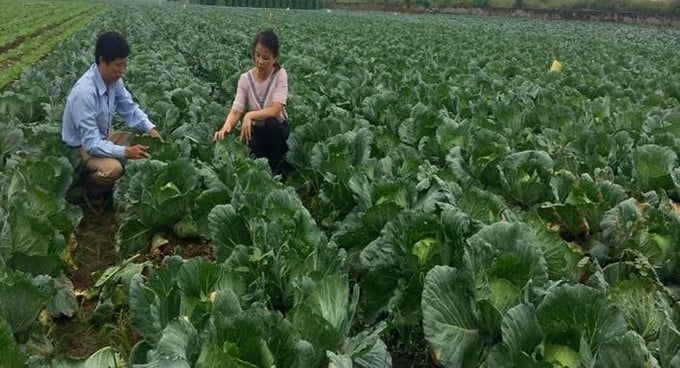
The cabbage variety CT17 is popularly grown in Pham Tran commune (Gia Loc, Hai Duong). Photo: Hai Tien.
Vietnam and South Korea are cooperating successfully in the industrial field. Particularly in agriculture, the international cooperation program between the South Korea Rural Development Administration (RDA) and the Vietnam Academy of Agricultural Sciences (VAAS) has also accomplished many important achievements.
Over the past 10 years, the Fruit and Vegetable Research Institute (FAVRI - VAAS) has tested and evaluated over 500 seed samples from 16 South Korean vegetable varieties. There are a number of vegetable varieties suitable for Vietnam’s ecological conditions, such as Summer King napa cabbage, CT17 cabbage, Shin Dong Ha radish, Super Honey 007 honeydew melon, zucchini, and some spicy crops, namely Paro Huk Keum Jang green onion, PBI 301 hot peppers, green perilla, Hacheong curly lettuce, etc.
Through production experiments in the North and the Central Highlands, the mentioned varieties grow and develop well with high quality and yield, good resistance to pests and diseases, suitability for consumer tastes, and high export potential.
According to Ph.D. Ngo Thi Hanh, Head of the Department of Vegetables and Spicy Crops (FAVRI), the demand for South Korean-origin vegetables in Vietnam is currently at a high level. There are three reasons for that high demand, including the large number of South Koreans living and working in Vietnam (approximately 250,000 people). Imports would cost too much because South Korea only has 6 months to grow vegetables, not to mention the rapidly aging agricultural labor force. Importing to Vietnam would include transportation, phytosanitary fees, and other additional fees.
Moreover, the reason why South Korean prefer native vegetable varieties is that these vegetable varieties have a high nutritional content and dry matter ratio, making them suitable for the taste of uncooked food.
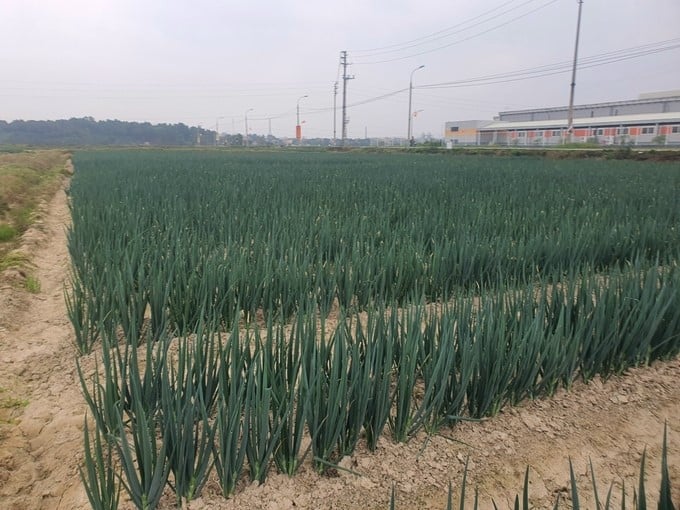
Paro Huk Keum Jang long green onions are grown in Van Duc, Gia Lam, Hanoi. Photo: Hai Tien.
Vietnam has many regions with cool year-round weather and a large day-night temperature difference, such as Da Lat (Lam Dong), Moc Chau (Son La), Sa Pa (Lao Cai), and the highland communes of Tan Lac district (Hoa Binh). The weather conditions are convenient for cold-loving vegetable varieties to grow, develop, and accumulate nutrients, achieving high yield and quality, including Korean vegetables. In addition, the north of Vietnam also has a cold winter, allowing for an increase in the growing area of "cold-loving” vegetables.
The results of demonstration models of South Korean vegetables in some localities also show that the production cost in Vietnam is only 50% of the foreign import price. The models also create more jobs, increase incomes, and improve farming skills for farmers, especially those in mountainous, remote, and isolated areas. The models create richness in the structure of varieties and vegetable crops grown in Vietnam and biodiversity in the fields, which contribute to reducing the risk of outbreaks of crop diseases in general and subsidiary crop diseases in particular.
According to incomplete statistics, in 2022 alone, the whole country planted about 500 ha of Korean vegetable varieties; the output was estimated at 20,000 tons of all kinds. Initially, a number of production linkage models were established in association with focal points of export consumption and processing.
Mr. Nguyen Van Minh, Director of Van Duc General Agricultural Service Cooperative (Gia Lam, Hanoi), said that in the winter of 2022, vegetable growing households in the area were all severely damaged by acid rain or bayberry whitefly. Whereas 15 ha of Korean Summer King cabbage demonstrated that the production at the cooperative was not affected but still gave outstanding productivity and income. This proves that this is a vegetable variety with a high tolerance to adverse conditions.
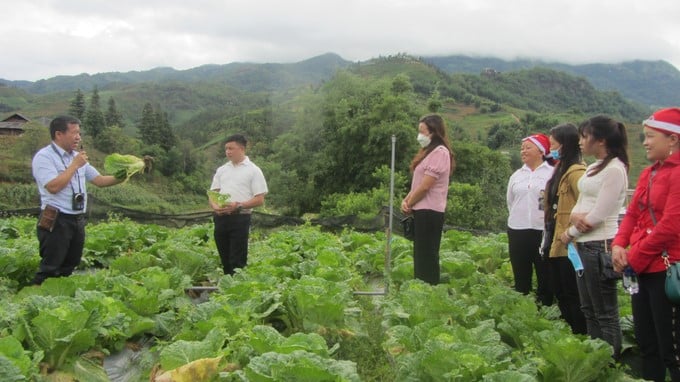
Korean napa cabbage is grown in Sapa, Lao Cai. Photo: Hai Tien.
Promoting the achieved results, in the last winter-spring crop, the cooperative converted 5ha of kohlrabi to growing Korean long green onions. The yield obtained was 3 tons, and the output value reached VND 40 million, three times higher than the previous crop with kohlrabi production. "Korean onions are not as branchy as our onions, but the yield is very high (80 tons/ha), the storage time is long, and they are popular with restaurants," said Mr. Nguyen Van Minh.
Mr. Phung Danh Mung, Director of Tan Minh Duc VietGAP Vegetable Cooperative (Pham Tran Commune, Gia Loc District, Hai Duong Province), said that the Korean cabbage variety CT17 has been mainly grown in the cooperative for four years now due to its advantages of high yield, deliciousness and softness when cooking, making it especially easy to sell.
"Most of the South Korean vegetables grown in Vietnam are accepted by domestic consumers. Because of its large leaves and little fragrance, only green perilla is mainly grown for export and to meet the consumption needs of the Korean community in Vietnam," said Ph.D. Ngo Thi Hanh.
Translated by Huyen Vu

(VAN) South Korea is currently the second-largest investor in Hai Phong in terms of the number of projects (186 projects) and the largest in terms of total registered investment capital, reaching USD 14.2 billion.
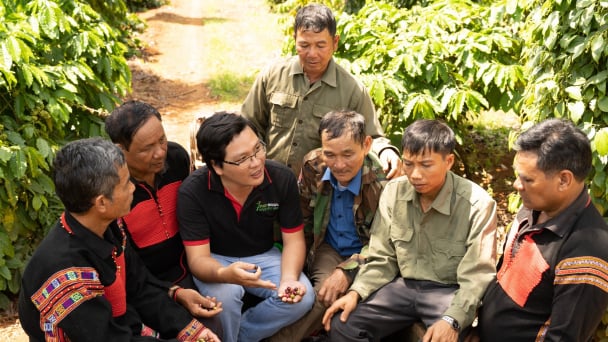
(VAN) As consumers become more environmentally conscious, legal regulations grow increasingly stringent...
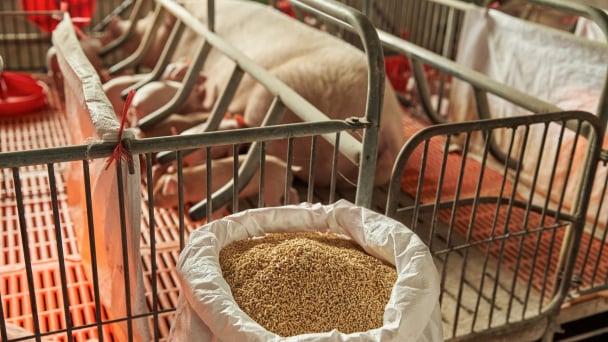
(VAN) CJ Feed&Care officially launched the FCR improvement campaign called “2025 Find Challenge Reach” in April 2025. In Vietnam, this campaign is implemented by CJ Vina Agri.
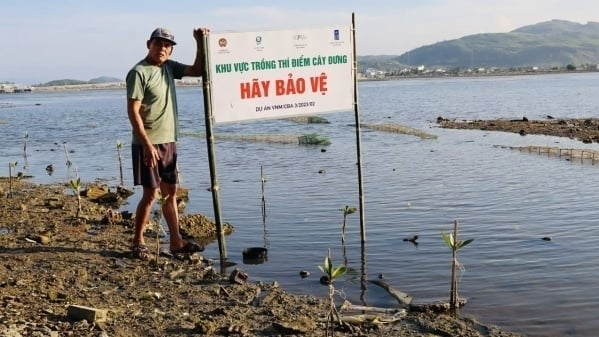
(VAN) The swamp in Pho Thanh is gradually being covered with red mangrove, creating a favorable environment for producing clean, high-quality salt.

(VAN) The trade turnover of agro-forestry-fishery products is growing significantly, along with investment cooperation commitments that are opening up new development directions between Vietnam and Russia.
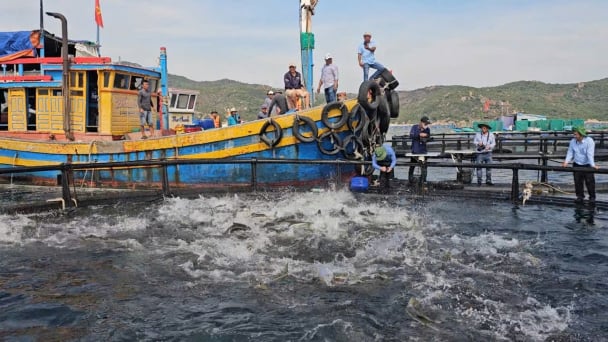
(VAN) Khanh Hoa is investing over 545 billion VND to develop 240 hectares of high-tech marine aquaculture in order to guarantee a consistent supply of seafood exports and achieve the USD 1 billion target.
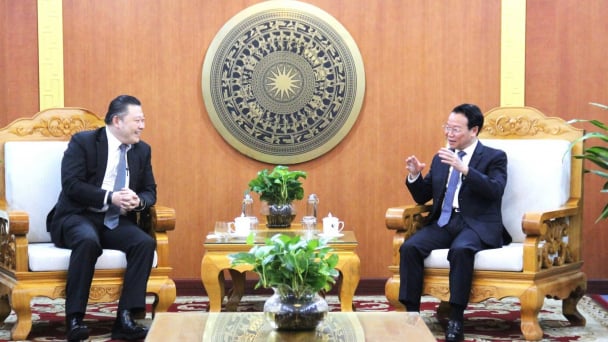
(VAN) Minister of Agriculture and Environment Do Duc Duy held a meeting with Soopakij Chearavanont, Chairman of C.P. Group, on May 15.